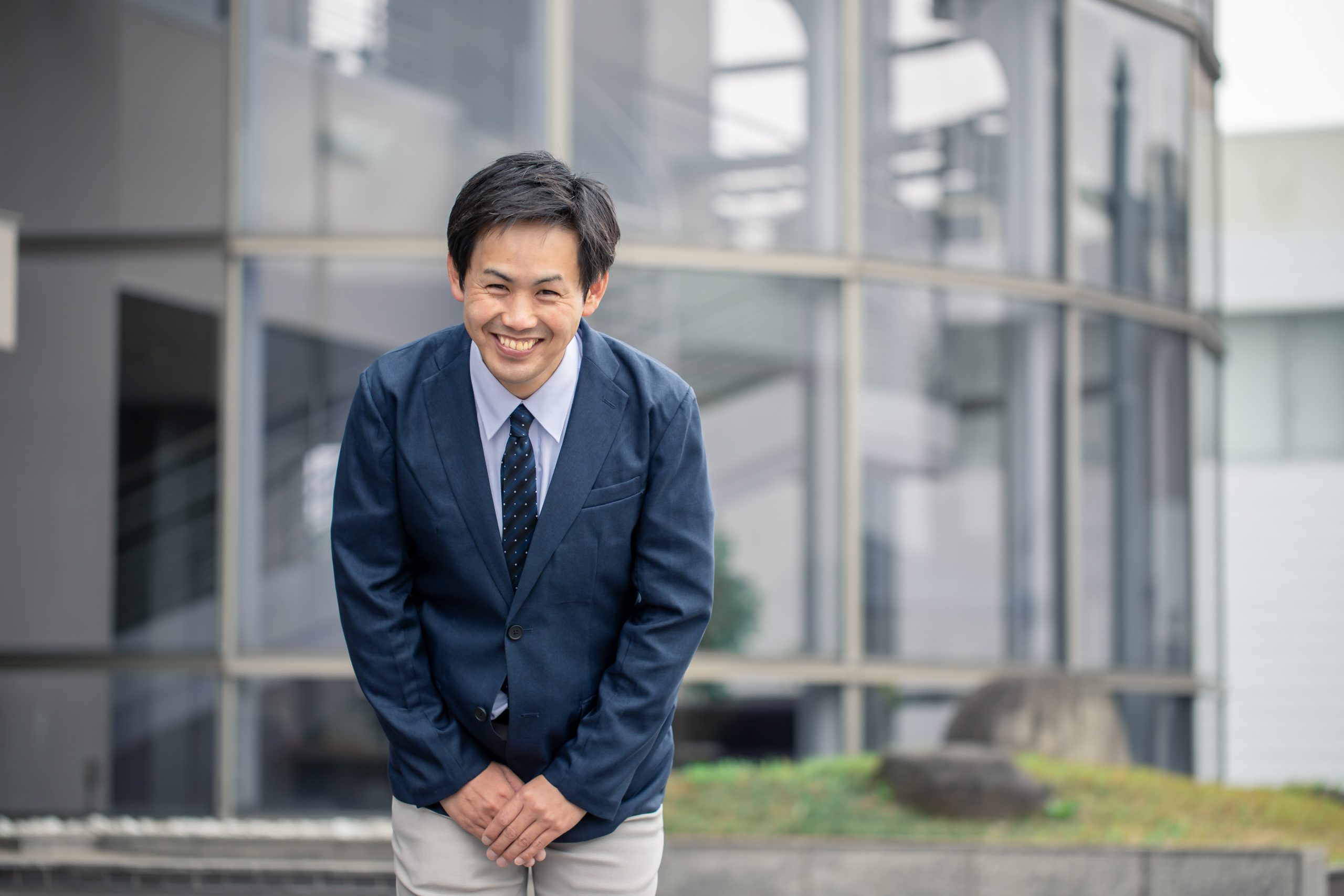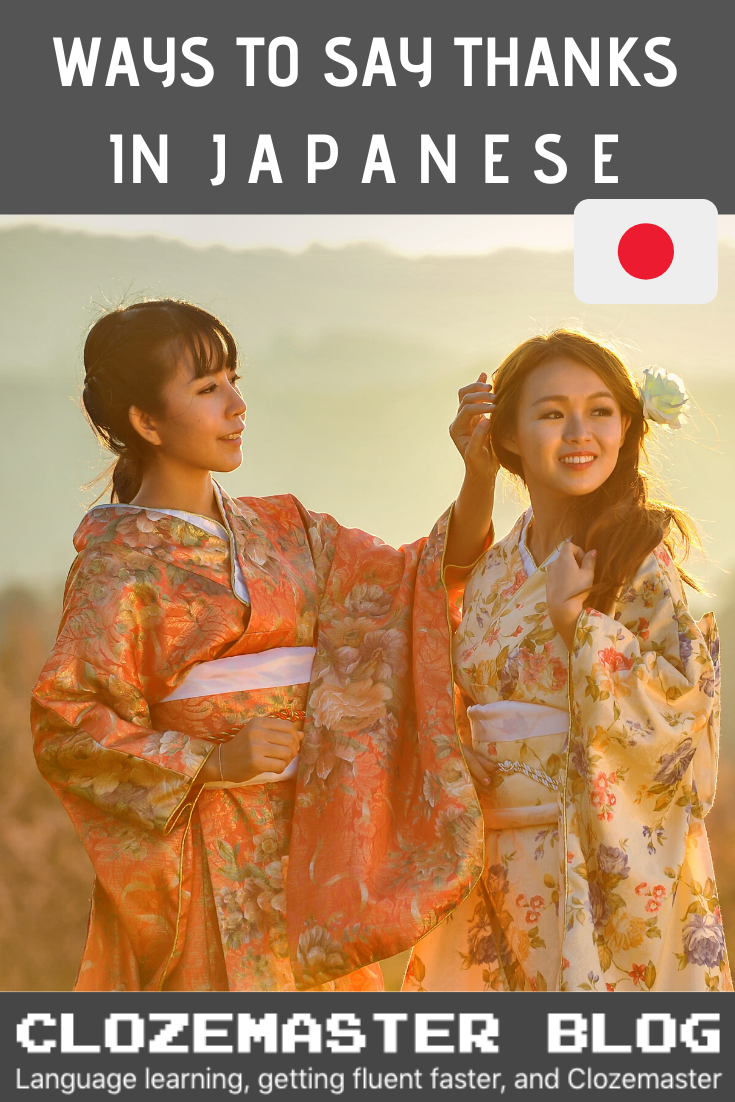
Japan is a country not only fixated on proper manners and etiquette, but also on gift-giving and various parties or events. In this kind of culture, it’s important to learn how to thank people when they invite you out, offer you a present, or even show you the way to the station. In this article, we’ll break down just how politely you should say thank you to your friends as opposed to your boss. We’ll also explore the many ways of saying thank you in Japanese.
Japanese Levels of Formality
There are four basic categories of honorific speech in Japanese: casual, teineigo, sonkeigo, and kenjougo. Depending on how well you know the person to whom you are speaking and what sort of relationship you have, one or more of categories might be inappropriate—even if you’re just saying, “thank you.”
It’s important to understand the basic rules for honorific Japanese so you don’t have an awkward conversation. Here’s a quick run-through of the rules for each level of honorific Japanese, as well as the situations in which to use them.
Casual Japanese
The rules of honorific Japanese are based on two things: seniority/experience and the concept of 内外 (うちそと、uchi soto), or inside/outside. Typically, if the person you’re speaking to is your age or younger, you can speak to them in casual Japanese. The same goes for people who are uchi, or within your personal social circle.
Casual Japanese involves any slang words, replacing -です (-desu) with -だ (-da), and if you identify as male, feeling free to refer to yourself as 俺 (おれ、ore). It is inadvisable to use casual Japanese with a person who is clearly older or more experienced than yourself, especially if you’ve just met them.
丁寧語 (ていねいご、teineigo) – Polite Form
Teineigo is the basic polite form of Japanese that you would find in a textbook. It’s a good go-to form if you’re unsure of what honorific level to use. Teineigo can be used at work, with a stranger or new acquaintance of any age, and even with people inside your immediate social circle.
Basic teineigo involves adding the suffixes -です/-ます (-desu/-masu) to the ends of sentences or verbs and referring to yourself only as 私 (わたし、watashi). The only point at which teineigo might be inappropriate to use is when you’re speaking to someone who has a close relationship with you. It might be seen as too polite, or even stiff and unfriendly.
尊敬語 (そんけいご、sonkeigo) – Honorific Form
Sonkeigo exists to honor the person to whom you’re speaking. It’s a polite form used most often in business or formal situations. You would only use it when speaking to someone at a higher rank or social status than yourself. For example, your company president or even your boss might expect you to speak to them in sonkeigo. For the most part, sonkeigo has no cut and dry formula or grammatical rule. It introduces different polite forms of casual or teineigo Japanese words.
A basic example is the teineigo form 食べます (たべます、tabemasu), or to eat, and its sonkeigo counterpart 召し上がる (めしあがる、meshi agaru). In addition to using these particular words or phrases for the sonkeigo form, it’s also common practice to add prefixes お-/ご- (o-/go-) depending on the situation.
謙譲語 (けんじょうご、kenjougo) – Humble Form
The humble form kenjougo is not necessarily more polite than sonkeigo. It just serves a different purpose. While sonkeigo exists to honor the person you are speaking to, kenjougo would be used to humble yourself as the speaker. This is an important distinction because certain phrases we’re about to look at are specific to kenjougo.
They are humbling, and therefore are not appropriate to use if the other person is the subject of the sentence. Like sonkeigo, the Japanese humble form has its own version of polite Japanese words. It’s used most often in the customer service industry, where servers or staff humble themselves in conversations with guests.
Saying Thank You in Japanese
Now that we’ve covered the basics of Japanese formality, let’s look at the different ways we can say thank you in Japanese! These words will be listed in order from the most formal to the least. Try to remember what you just learned about teineigo, sonkeigo, and kenjougo.
恐縮です (きょうしゅくです、kyoushuku desu)
The phrase 恐縮です is incredibly formal. It simultaneously humbles the speaker and honors the addressee. You might use this phrase to say thank you in Japanese when a superior or elder has done something kind.
感謝の言葉もございません. (かんしゃのことばもございません、Kansha no kotoba mo gozaimasen)
Literally translated, this phrase means, “I don’t even have words to express my thanks.” Although technically teineigo, 感謝の言葉もございません is such a heartfelt and extreme expression of thanks that it is appropriate in even more formal situations.
御礼申/お礼 申し上げます (おんれい/おれい もうしあげます、onrei/orei moushi agemasu)
お礼申し上げます is a specifically kenjougo level of thanks. Remember that you can only use it when referring to yourself! The word お礼 is “thanks” in English. This phrase means, “I offer my thanks.” You can use it to express humble and sincere thanks for a gift or a favor.
これはこれはご丁寧に… (これはこれはごていねいに…、Kore wa kore wa go teinei ni…)
丁寧 is actually included in the sentence, so it makes sense that this phrase is teinei or polite Japanese! People often use これはこれはご丁寧に in the business world as a comment on a situation they are grateful for. For example, if a customer or coworker brought おみやげ (omiyage), or souvenirs, to the office, everyone might say, “これはこれはご丁寧に!”
おかげさまで助かりました. (おかげさまでたすかりました、Okage sama de tasukarimashita.)
おかげさまで助かりました translates to Thanks to you, I was helped. You might use this teineigo sentence if your coworker assisted you with a project in the office.
恐れ入ります (おそれいります、osore irimasu)
You’ll find this phrase most often in the customer service industry. 恐れ入ります is used to thank—or apologize to!—customers. That said, it isn’t kenjougo. The suffix -ます puts it under the teineigo category. You probably won’t need to say 恐れ入ります unless you’re serving customers at a restaurant or other facility.
感謝します (かんしゃします、kansha shimasu)
The word 感謝 means “thanksgiving”, “gratitude” in English, so this phrase literally means “I am grateful.” It’s a bit too polite to use in daily conversation with your friends. 感謝しますcan be used for giving someone a very heartfelt thanks, like when you thank your parents at a graduation speech or something. It can also be used in the workplace, but might come across as stilted or sappy.
ご苦労様です.(ごくろうさまです、Gokurou sama desu.)
ご苦労様です implies that someone has finished a demanding task and can certainly be used to imply gratitude. It’s not a phrase you say to those above you, but vice versa.
お世話になりました. (おせわになりました、Osewa ni narimashita.)
While not literally translated to “thank you,” the phrase お世話になります has many valuable uses in Japanese culture. It literally translates to “I am in your care.” In this case by using the past tense conjugation, you’re showing gratitude for the care, help, or general assistance you received from someone else.
ありがとうございます. (Arigatou gozaimasu.)
This is probably the word that first comes to mind when you think of “thank you” in Japanese. Of course, arigatou gozaimasu is a teinei form and can be used in any of the above situations as well. If you were to be using arigatou gozaimasu when speaking to someone older or higher ranked than yourself, you would want to add doumo to the beginning of the phrase: どうもありがとうございます(doumo arigatou gozaimasu).
If you want to be informal, for example, when thanking a friend or family member, you can simply say: arigatou! If you are thanking someone for something that has already happened, say, ありがとうございました (arigatou gozaimashita), as the -した conjugation infers past tense.
すまません (sumimasen)
Another word that multi-tasks in Japanese, sumimasen can also be used to say, “excuse me.” In this case, it is another semi-formal or polite way of saying thank you in Japanese. The extremely casual version of this phrase (mostly used by men) is 済まない(すまない、sumanai).
どうも (doumo)
In Japanese, どうも can also be a way of saying hello. In this case, it’s a casual way of showing gratitude. Short, sweet, and simple.
悪いな (わるいな、warui na)
In English slang, this could be translated as, “My bad.” It’s used to thank a friend or colleague who’s done something for you. This is quite informal, so don’t use it with an acquaintance or those above you in the office hierarchy.
あざーす (azaasu)
A very casual sort of slang word, azaasu is just a shortened version of arigatogozaimasu. This is certainly a word you would only use within your immediate social circle. It might even be considered rude by older adults in your family. You probably shouldn’t use あざーす with anyone except your friends.
サンキュー (sankyuu)
This is a borrowed word from English: it’s actually thank you! サンキューis another very casual word, so only use it with your friends. It has a friendly, sometimes borderline flirtatious nuance to it.
Thanking Someone for a Specific Thing
If you want to say thank you for something specific, there’s a grammatical formula that should help.
verb (-て form) + くれて ありがとう (kurete arigatou)
This is a fairly casual sentence. If you remember from earlier in the article, ありがとう can be made more formal by adding ございます. You can also replace ありがとう with 感謝します (かんしゃします、kansha shimasu) to make the sentence a bit more heartfelt.
Here are some examples:
Casual: “Thanks for helping me with my homework.”
宿題を手伝ってくれてありがとう. (しゅくだいをてつだってくれてありがとう、
Shukudai wo tetsudatte kurete arigatou.)
Polite: “Thank you very much for helping me with my homework.”
宿題を手伝ってくれてありがとうございます. (しゅくだいをてつだってくれてありがとうございます、Shukudai wo tetsudatte kurete arigatou gozaimasu.)
Heartfelt/More polite: “I’m so grateful that you helped me with my homework.”
宿題を手伝ってくれて感謝します. (しゅくだいをてつだってくれてかんしゃします、Shukudai wo tetsudatte kurete kansha shimasu.)
Saying Thank You in Japanese When You’re Refusing Something
As we mentioned in the beginning of this article, Japan’s culture is inundated with office parties and gift-giving. But what if you don’t have time to go out, or if you want to politely turn down a gift? Here’s a go-to phrase when you want to express gratitude while politely refusing:
気持ちは嬉しいですが… (きもちはうれしいですが…, kimochi wa ureshii desu ga…)
This roughly translates to, “I appreciate the offer, but…” in English. Technically, the words “thank you” aren’t involved. It’s still the most polite and concise way to begin a sentence of polite refusal.
Thank You in Japanese – Conclusion
There are four levels of honorific Japanese language: casual, teineigo (polite), sonkeigo (honorable), and kenjougo (humble). These are important to remember because certain Japanese words or phrases of gratitude might be specific to humble Japanese while others are more polite or honorific.
Either way, it’s better to consider the person you’re thanking: are they in your inner social circle, or uchi? If so, you can thank them casually and in a friendly manner. However, if the person you’re speaking to is older, more experienced, or in a higher office position than yourself, it would be a more culturally correct thing to thank them using an honorific or humble phrase of gratitude.
What’s your experience with thanking people in Japanese? Let us know in the comments! Or, if you’re learning all of this for the first time, tell us which of these Japanese words for thank you was your favorite! Thank you for reading this article about gratitude in Japanese.
Learn Japanese in context with ClozemasterClozemaster has been designed to help you learn the language in context by filling in the gaps in authentic sentences. With features such as Grammar Challenges, Cloze-Listening, and Cloze-Reading, the app will let you emphasize all the competencies necessary to become fluent in Japanese. Take your Japanese to the next level. Click here to start practicing with real Japanese sentences! |


